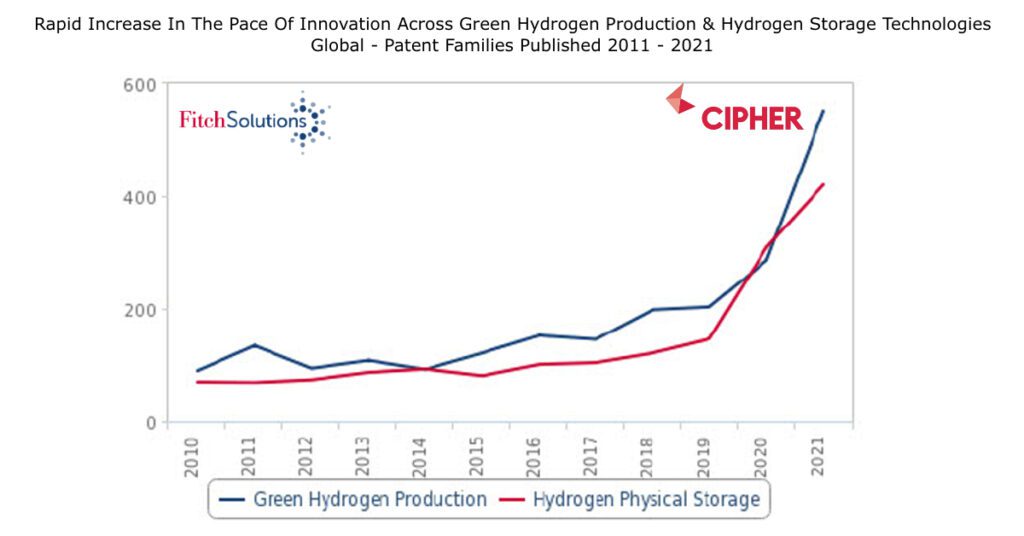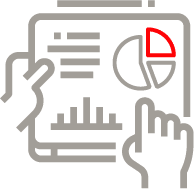Europe and Asia Edging Ahead for Green Hydrogen Technology Supremacy

This LexisNexis® Cipher report discusses how green hydrogen technology will see rapid innovation as the sector continues to scale and evolve.
Overview
- Green hydrogen technology will see rapid technological innovation as the sector continues to scale and evolve.
- Asia, North America and Europe will lead the electrolyzer technology race given their respective project pipelines, suitability for hydrogen market development and existing innovation in the sector.
- European firms have a dominant position in hydrogen project pipeline, but Asian companies leads in terms of innovation of the sector. The US underperforms as it is a notable project pipeline laggard.
Green hydrogen is produced using renewable-based electricity and water as feedstock for an electrolyzer, which splits water into its two constituents of hydrogen and oxygen. Electrolyzer technology has been in industrial practices for decades and is highly understood.
However, the increased flow of investment into the sector has seen a renewed focus on how the technology can be deployed.
The pipeline of hydrogen projects in the Fitch Solutions Infrastructure Key Projects Database (KPD) has increased significantly over the past year, rising from a handful of small-scale 10MW capacity projects over Q120 to over 220 commercially viable, large-scale (greater than 10-100MW+) projects by Q122 with an approximate known combined-capacity of 128GW.
This growth in the sector is being driven by:
- Declining renewable energy costs
- A surge in renewable generation
- A global ambition to decarbonize energy intensive sectors in an effort to mitigate climate change
This has brought on a groundswell of investment not only into project development, but also into technological advancements and innovation.
At a time of rapid change within the industry, the challenge of assessing the competitive landscape centres on the lack of sufficient data on investments across green hydrogen production and hydrogen storage.
Therefore, we have incorporated patent data into this research to highlight innovation specific to the sector.
By doing so we are able to identify the pace of progress associated with companies through their investment into research and development and patent filing in what is still a nascent industry.
As seen in the Cipher chart below, the past five years have seen a rapid increase in the the pace of company-led innovation in green hydrogen production and storing of the gas.

Looking across the patent data we see clear evidence of the accelerated pace of innovation in recent years.
Between 2019 and 2021 the total number of granted & pending patent classes that were published for production-based green hydrogen technology was found to be 66%, and 65% for hydrogen storage.
We expect this rapid pace of innovation to continue to grow as technology and the sector evolves into a core part of global decarbonisation efforts.
Despite electrolyzer technology being highly established, there is not one form of design. The current industry leader is the proton exchange membrane (PEM) technology.
We expect the majority of innovation in electrolyser technology to be focused on improving efficiency and reducing costs, with a particular focus on potential variations of the technology that reduce the need for high value materials.
PEM devices require significant amounts of platinum and iridium and therefore advancements in electrolyzers that use fewer high-cost materials are being explored.
Further highlights
Our research also identified that:
- Storing gas remains a core issue to high volume users
Industrial users of hydrogen that require large volumes will find themselves needing dedicated pipelines to sustain supply or the development of vast storage facilities. - Electrolyser technology race apparent across three key regions
Asia, North America and Europe will lead the electrolyser technology race given their respective project pipelines, suitability for hydrogen market development and existing innovation in the sector. - Suitability Index supports regionalization of technology
The North America and Western Europe (NAWE) region leads our global index for green hydrogen market suitability, which considers the factors which would need to be in place for a green hydrogen industry to emerge.






